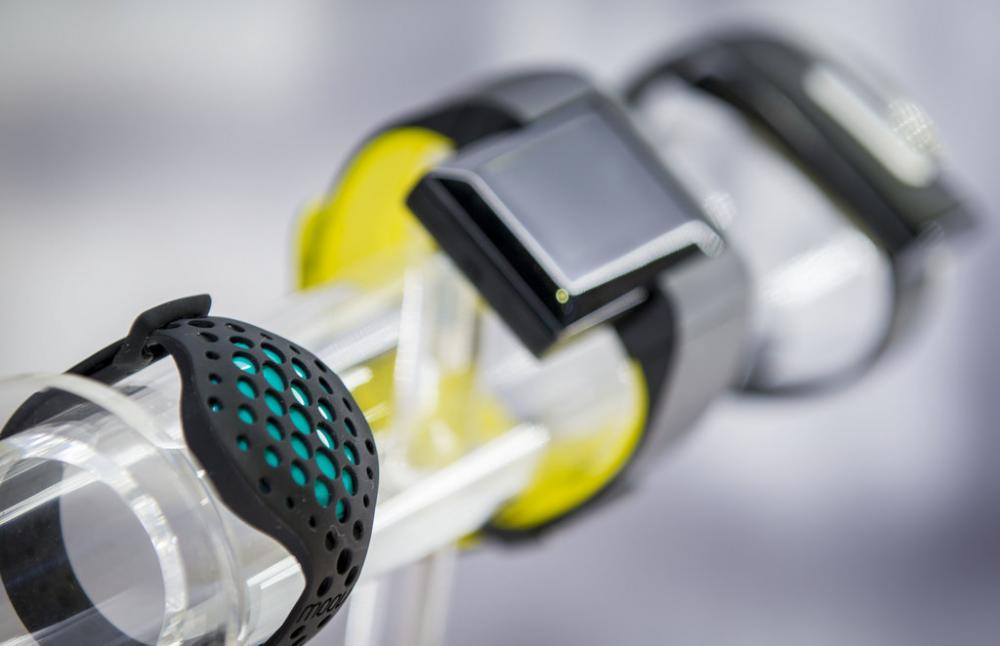Have you ever been in the middle of an intense workout, only to be deprived of water, a protein shake or a much needed post-run snack because you left your bulky wallet behind? Well, you’ll soon be able to consider those conundrums a problem of year’s past.
MasterCard is helping customers kiss the cash and pesky plastic cards goodbye by turning any gadget, accessory or wearable into a payment device.
The New York-based financial institution is working toward delivering consumers with safe and convenient payment alternatives through it’s “Commerce For Every Device” program. The company formed a partnership with Coin that will power payments through fitness bands, smart watches and other wearable devices, Sherri Haymond, MasterCard’s senior vice president of digital channels in emerging payments, told [a]listdaily.
“People do not wake up in the morning and say, ‘I want to make a payment today,’” Haymond says. “What we’re doing is trying to make the process super seamless like it’s supposed to be, and also enable experiences before and after the payment to enrich the customer’s lives.”
The idea behind MasterCard’s shift is to simplify functionality for both consumers and device manufacturers from a technological and operational standpoint. “You’re going to start seeing these things become very real,” she says. “We’re going to make it super easy. All different kinds of devices will be enabled for payments.”
Haymond says that paying through wearables was problematic in the past because chips were too big, and Bluetooth consumed too much battery. Enter Coin, who’s provided MasterCard a tech solution by shrinking the chip size to a super-thin pinky nail, yet, still enabled it with an NFC chip and Bluetooth that drains little battery. Coin will provide hardware and software technology that is integrated with the MasterCard Digital Enablement Service and can be embedded into devices to enable manufacturers to implement payment functionality into their products.
“Coin’s Payment of Things platform is a turnkey solution to enable payments for the wearable/IoT industry. Leveraging Coin’s technology, device manufacturers will benefit from significantly reduced costs and time to market,” said Kanishk Parashar, CEO and co-founder of Coin. “MasterCard is our essential partner as we team up to enable the wearable domain that is projected to grow to an astounding $53 billion by 2019.”
Wearable companies like Moov, Omate and Atlas Wearables have already jumped on board, and many more partners are currently in the works, Haymond notes. “There aren’t enough hours in the day to respond to the companies interested in participating. We have a huge pipeline.”
Haymond says the success of mobile wallets like Apple Pay, Samsung Pay and Android Pay throughout the years have alleviated any security concerns. “Consumers aren’t skeptical of this at all,” Haymond assures. “It’s extremely safe and secure. With all of these devices, consumers will get transaction notifications through their issuer. … It actually fosters a closer connection between the customer and their bank. Our research shows that customers strongly prefer to have financial interactions with their banks rather than a third party.”
The novelty of wearables will wear off over time, but brands like MasterCard are jumping into the picture to inject some life into the sector – not to mention some yet to be imagined categories.
“We’re putting forth these ideas, and enabling an entire ecosysytem, and trying to be a leader in the space to spur a movement,” says Haymond. “We’ll measure success based on the number of transactions in one respect, whether consumers are using it, and if our issuers are happy about it. We expect for it to become a part of the consumer’s daily lives.”
Pretty soon you’ll be able to make payments with a simple wave of the wrist in front of the payment terminal. The cashier will be amazed, and everyone around you will think its magic, and so will you – until you review the next statement.

